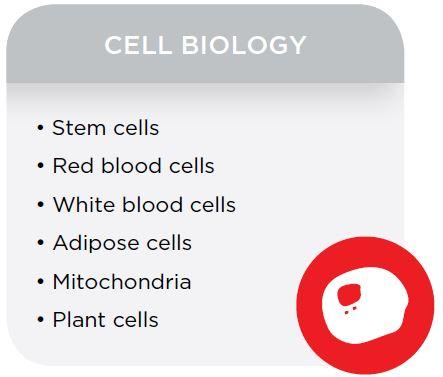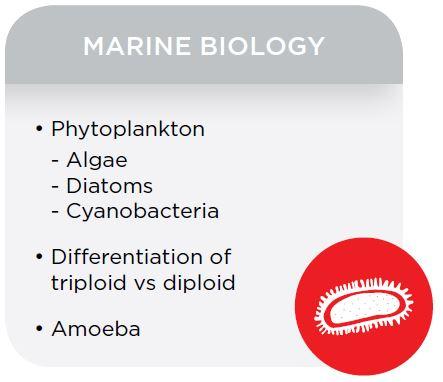Ensure product quality, safety, and regulatory compliance
Particle counting is essential for ensuring product quality, safety, and regulatory compliance in various industries. It plays a vital role in maintaining consistency, optimizing processes, and contributing to the overall success of manufacturing and research endeavours.
The Multisizer 4e particle sizer and counter is the most accurate and flexible particle characterization device available, boasting an unparalleled sizing range of 0.2 - 1600 μm. It uses the Coulter principle to detect particles via electrical zone sensing, regardless of the particle’s nature or optical properties. This makes it an ideal tool for detecting and counting a wide variety of particles, such as: mammalian cells, bacteria, yeast, abrasives, toner particles, cell aggregates,…
What is the Coulter Principle?
The fundamental piece of the Coulter Principle is particles or cells passing through a “hole.” However, the hole must meet certain specifications. More precisely, the hole is an elongated glass tube. Within the glass tube, a finely bored ruby disk is embedded that constricts the flow of fluid through the glass tube while simultaneously constricting the current to a controlled value with little variation. If an aperture (glass tube) is placed between two electrodes and a current path is provided by a low concentration electrolyte, a resistance exists that can be measured between the electrodes. The aperture creates what is called a sensing zone. Particles in low concentration, suspended in the electrolyte, can be counted when passing through the aperture.

As a particle passes through the aperture, a volume of electrolyte-containing solution equivalent to the immersed volume of the particle is displaced from the sensing zone. This causes a short-term change in the impedance across the aperture. The resistance change can be measured as a voltage pulse or a current pulse, meaning that each pulse corresponds to a particle (count). The voltage pulse is proportional to the volume of the sensed particle. Using counter and pulse analyser circuits, the number and volume of particles passing through the sensing zone can be measured. The volume may be represented as the equivalent spherical diameter. The measured particle sizes can be binned, and a particle size distribution is obtained.
This technique is particularly valuable because it does not depend on the optical properties or composition of the particles, making it versatile over a wide range of particle types, including cells, micro-organisms, and synthetic particles.
The Coulter principle-based approach, as implemented in the Multisizer 4E, is of great interest in applications where precision and accuracy in particle size analysis are paramount. Industries such as pharmaceuticals, biotechnology and materials science benefit from the detailed insight provided by this method, contributing to improved quality control, research and development processes. The Multisizer 4E is a powerful tool for scientists and researchers seeking comprehensive particle characterisation in their analytical work.

Our products
Related product categories
What applications are covered by the Multisizer in Life Sciences?
The Multisizer is an ideal tool for detecting and counting a wide variety of particles, such as:
Mammalian cells (cell counting, cell sizing and monitoring of the cell volume)
Bacteria
Yeast
Abrasives
Toner particles
Cell aggregates
Spheroids
Large protein aggregates

Particle Counting in Cell Biology

Particle Counting in Microbiology












